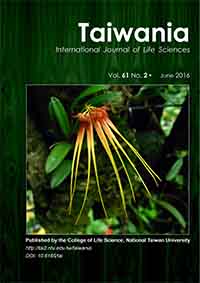Research Paper
Impact of climate on structure and composition of Ridge Top forests in Garhwal Himalaya
C. M. Sharma, Ashish K. Mishra, Ram Krishan, Om Prakash Tiwari and Y. S. Rana
Published on: 04 June 2016
Page: 61 - 69
DOI: 10.6165/tai.2016.61.61
Abstract
Species association and composition on ridge top forests (RTFs) in Himalayan ranges depend on climatic factors mainly, which are not well studied. To appraise climatic response on vegetation association and composition in different RTFs along altitudinal gradients, we selected four study sites with different altitudinal ranges viz. (i) Hindolakhal-Narendranagar range (< 2000 m asl.), (ii) Mussoorie-Dhanolti range (1900–2900 m asl.), (iii) Chaurangikhal-Harunta range (2400–3300 m asl) and (iv) Dayara-Gidara range (2500–3750 m asl) in Garhwal Himalaya. We found that in these ranges 67 woody tree species, represented by 55 genera and 39 families were present. The most abundant families were Pinaceae and Fabaceae, represented by 6 tree species in each. Mean stand (stem) density in the forests was recorded as 597 ± 29 trees ha-1, which ranged between 546–616 trees ha-1 with a mean basal area of 77.25 ± 17.90 m2 ha-1 (ranging from 54.43-102.83 m2 ha-1). Cluster analysis used to show the vegetation distribution and association on the ridge top forests of various mountain ranges. Canonical Correspondence Analysis revealed that elevation and climatic factors were the dominant factors for regional differences in species composition among ridge tops.
Keyword: Cluster analysis, Garhwal Himalaya, Ridge tops, Species composition, Species distribution.


